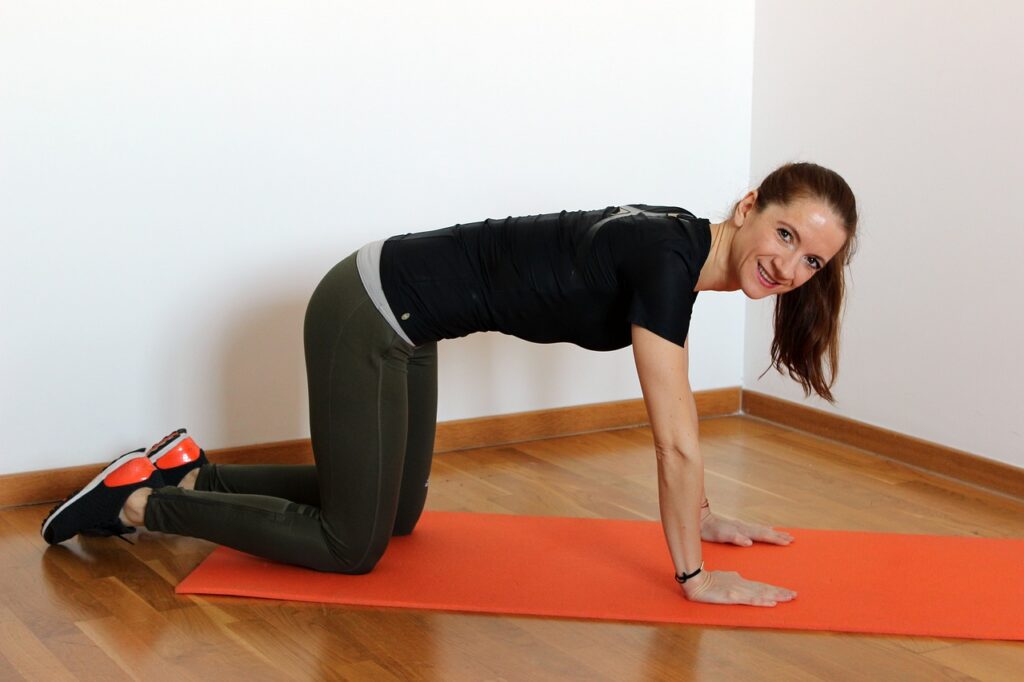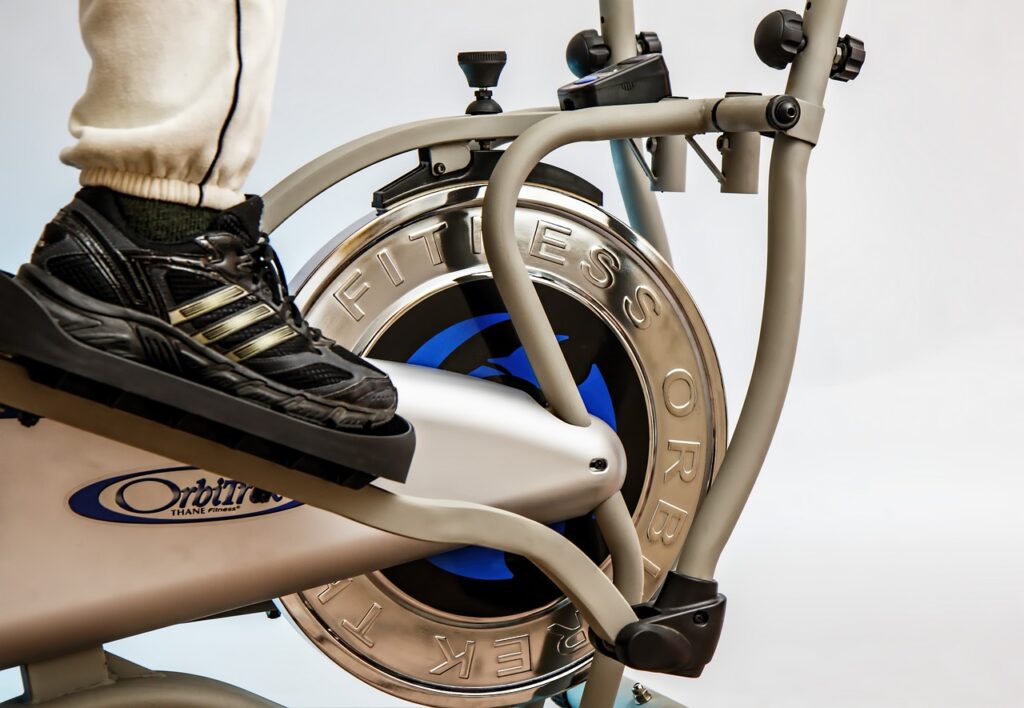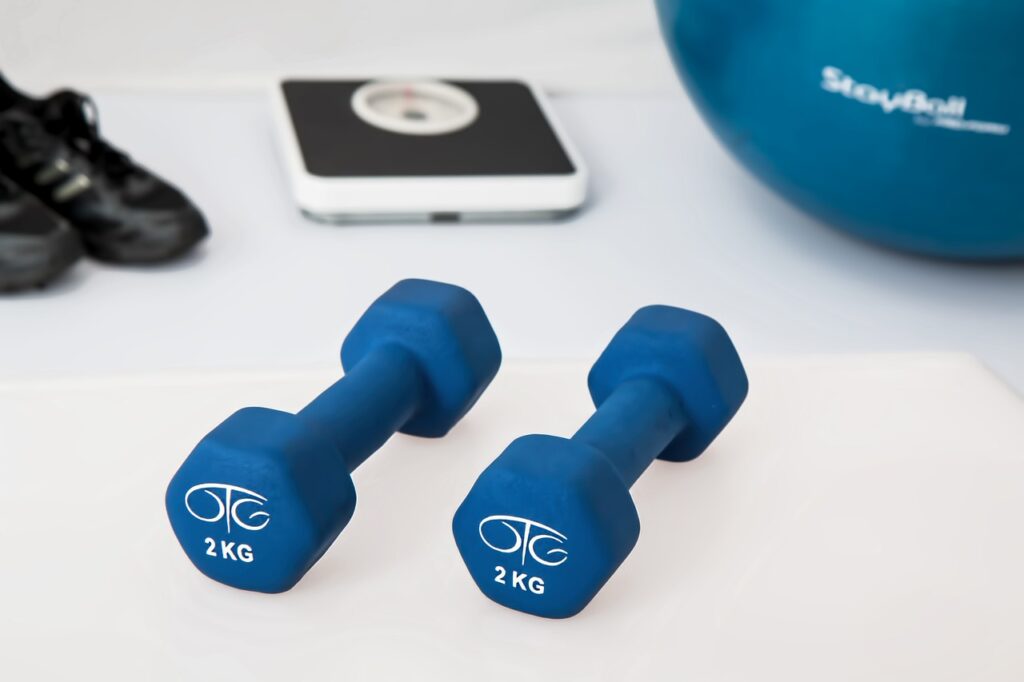
Weight loss can be a challenging journey, especially for beginners who are just starting out. One of the most effective ways to lose weight is through exercise. However, for beginners, it can be overwhelming to know where to start and what exercises to do. This article will provide an overview of weight loss exercise for beginners, including the benefits of exercise, types of exercises to consider, and tips for getting started.
Exercise is an essential component of weight loss, as it helps to burn calories and increase metabolism. In addition to weight loss, exercise has numerous other health benefits, such as reducing the risk of chronic diseases and improving mental health. However, it’s important to note that exercise alone may not lead to significant weight loss. A combination of exercise and a healthy diet is necessary to achieve sustainable weight loss.
There are many types of exercises that beginners can consider, including cardio, strength training, and flexibility exercises. Cardio exercises, such as walking, jogging, or cycling, are great for burning calories and improving cardiovascular health. Strength training exercises, such as weight lifting or bodyweight exercises, can help to build muscle and boost metabolism. Flexibility exercises, such as yoga or stretching, can improve range of motion and reduce the risk of injury. It’s important to choose exercises that are enjoyable and sustainable for the long term.
Table of Contents
Understanding Weight Loss
The Science of Burning Calories
Weight loss is a process that involves burning calories. Calories are the units of energy that the body uses to perform various functions, including physical activity. When the body burns more calories than it consumes, it leads to weight loss.
There are two ways to burn calories: through exercise and through the body’s natural metabolic processes. Exercise burns calories by increasing the body’s energy expenditure. The more intense the exercise, the more calories the body burns.
In addition to exercise, the body also burns calories through its natural metabolic processes. The body’s metabolism is the process by which it converts food into energy. The faster the metabolism, the more calories the body burns.
Setting Realistic Goals
When it comes to weight loss, setting realistic goals is essential. It’s important to understand that weight loss is not an overnight process. It takes time and effort to achieve significant weight loss.
Setting realistic goals involves understanding how much weight you can realistically lose in a given time frame. A safe and healthy rate of weight loss is 1-2 pounds per week. Therefore, setting a goal of losing 10 pounds in a week is not realistic or healthy.
It’s also important to set goals that are achievable. For example, setting a goal of exercising for an hour every day when you’ve never exercised before is not realistic. A more achievable goal would be to start with 20-30 minutes of exercise per day and gradually increase the duration and intensity over time.
In summary, understanding the science of burning calories and setting realistic goals are essential for successful weight loss. By incorporating regular exercise and making healthy lifestyle choices, anyone can achieve their weight loss goals over time.
Pre-Workout Essentials
Warm-Up Routines
Before starting any exercise routine, it is important to warm up to prevent injury and prepare the body for physical activity. A good warm-up should last about 5 to 10 minutes and include light cardio exercises such as jogging in place, jumping jacks, or walking on a treadmill.
Stretching can also be incorporated into the warm-up routine. Dynamic stretching, which involves moving while stretching, is recommended before a workout. Examples of dynamic stretches include leg swings, arm circles, and walking lunges.
Safety Tips
Safety should always be a top priority when exercising. Beginners should start with low-impact exercises and gradually increase the intensity and duration of their workouts. It is important to listen to the body and not push beyond its limits.
Proper form is also crucial to prevent injury. Beginners should seek guidance from a certified personal trainer or fitness professional to learn proper form for each exercise.
Equipment Overview
For weight loss exercises, equipment such as dumbbells, resistance bands, and stability balls can be used. It is important to choose the appropriate weight and resistance level based on individual fitness level and goals.
Comfortable and supportive workout clothes and shoes are also essential for safety and performance. Breathable fabrics and proper fitting shoes can prevent blisters and other injuries.
In summary, warming up, prioritizing safety, and using appropriate equipment are essential pre-workout steps for beginners looking to start a weight loss exercise routine.
Cardio Exercises for Beginners
Walking and Jogging
Walking and jogging are great cardio exercises for beginners. They are low impact and can be done anywhere, without any equipment. Walking is a great way to start, and gradually increase the intensity by adding jogging intervals. It is important to wear comfortable shoes and clothing and to start with short distances, gradually increasing the time and distance.
Cycling
Cycling is another great cardio exercise for beginners. It is low impact and can be done indoors or outdoors. Cycling can be done on a stationary bike or a regular bike. It is important to adjust the resistance and start with short sessions, gradually increasing the time and intensity. It is also important to wear a helmet and comfortable clothing.
Swimming
Swimming is an excellent full-body workout and a great cardio exercise for beginners. It is low impact and can be done in a pool or open water. Swimming can be done with or without equipment, such as kickboards or flippers. It is important to start with short sessions and gradually increase the time and intensity. It is also important to wear appropriate swimwear and to swim in a safe and supervised area.
Overall, cardio exercises are an important part of a weight loss exercise routine. They help to burn calories, improve cardiovascular health, and increase endurance. By starting with low impact exercises and gradually increasing the intensity, beginners can safely and effectively improve their fitness level.
Strength Training Basics
Bodyweight Workouts
Bodyweight workouts are exercises that use the weight of your own body as resistance. They are a great way to build strength and endurance without the need for equipment. Examples of bodyweight exercises include push-ups, squats, lunges, and planks.
Resistance Bands
Resistance bands are a versatile and inexpensive way to add resistance to your workouts. They come in different levels of resistance and can be used for a variety of exercises such as bicep curls, tricep extensions, and rows.
Free Weights Fundamentals
Free weights are another option for strength training. They include dumbbells, barbells, and kettlebells. When using free weights, it’s important to start with lighter weights and focus on proper form to avoid injury. Common exercises include bench press, deadlifts, and shoulder press.
Incorporating strength training into a weight loss exercise routine can help increase muscle mass, boost metabolism, and improve overall fitness. It’s important to start with a manageable weight and gradually increase as you become stronger.
Core Strengthening Exercises
Planks
Planks are a great exercise to strengthen the core muscles. To perform a plank, start by getting into a push-up position, but instead of lowering yourself to the ground, hold your body in a straight line from your head to your heels. Keep your abs tight and hold this position for as long as possible, aiming for 30 seconds to start with and gradually increasing the time as you get stronger.
Bridges
Bridges are another effective exercise for strengthening the core muscles. To perform a bridge, lie on your back with your knees bent and your feet flat on the ground. Lift your hips up towards the ceiling, squeezing your glutes and engaging your core muscles. Hold this position for a few seconds before lowering your hips back down to the ground.
Leg Raises
Leg raises are a great exercise for targeting the lower abs. To perform leg raises, lie on your back with your legs straight out in front of you. Slowly lift your legs up towards the ceiling, keeping them straight and your core muscles engaged. Lower your legs back down to the ground and repeat.
Incorporating these core strengthening exercises into your workout routine can help improve your overall fitness and aid in weight loss efforts. Remember to start slowly and gradually increase the intensity and duration of the exercises as your fitness level improves.
Flexibility and Balance
Stretching Techniques
Stretching is an essential part of any exercise routine, especially for beginners. It helps to improve flexibility and range of motion, reduce the risk of injury, and prevent muscle soreness. Some effective stretching techniques for beginners include:
- Hamstring Stretch: Sit on the floor with your legs straight in front of you. Lean forward, reaching towards your toes, and hold for 15-30 seconds.
- Shoulder Stretch: Stand with your feet shoulder-width apart. Reach one arm across your chest and hold it with the other arm for 15-30 seconds. Repeat on the other side.
- Quad Stretch: Stand with your feet shoulder-width apart. Bend one knee and bring your heel towards your buttocks. Hold your ankle with one hand and hold the wall or a chair with the other hand for balance. Hold for 15-30 seconds and repeat on the other leg.
Yoga Poses
Yoga is a great way to improve flexibility, balance, and overall fitness. Some beginner-friendly yoga poses include:
- Downward Dog: Start on your hands and knees. Lift your hips up and back, straightening your arms and legs. Hold for 5-10 breaths.
- Child’s Pose: Start on your hands and knees. Sit back on your heels and stretch your arms forward. Hold for 5-10 breaths.
- Tree Pose: Stand with your feet hip-width apart. Place your right foot on your left thigh, above the knee. Bring your hands to your heart and hold for 5-10 breaths. Repeat on the other side.
Tai Chi Fundamentals
Tai Chi is a gentle, low-impact exercise that can improve balance, flexibility, and overall well-being. Some fundamental Tai Chi movements for beginners include:
- Wu Chi: Stand with your feet shoulder-width apart, arms at your sides. Focus on your breathing and relax your body.
- Cloud Hands: Stand with your feet shoulder-width apart, arms at your sides. Shift your weight to one foot and bring the other foot forward, turning it slightly outwards. Shift your weight to the other foot and bring the first foot back, turning it slightly inwards. Repeat on the other side.
- Single Whip: Stand with your feet shoulder-width apart, arms at your sides. Step forward with one foot and turn it outwards. Shift your weight to the front foot and raise your arms to shoulder height, with one arm forward and one arm back.
Cooling Down
Importance of Cooling Down
Cooling down after a weight loss exercise routine is just as important as warming up. It helps the body to gradually return to its normal state and prevent the risk of injury. Cooling down also helps to reduce muscle soreness and stiffness that can occur after a workout.
Stretching Post-Workout
Stretching is an essential part of cooling down after a weight loss exercise routine. It helps to maintain and improve flexibility, which can reduce the risk of injury. Stretching also helps to reduce muscle soreness and stiffness that can occur after a workout. It is important to hold each stretch for at least 15-30 seconds and breathe deeply throughout the stretch.
Hydration and Nutrition
Staying hydrated is crucial during and after a weight loss exercise routine. It helps to regulate body temperature, transport nutrients, and remove waste from the body. It is recommended to drink water before, during, and after a workout to maintain proper hydration levels.
Nutrition is also important after a workout. Consuming a balanced meal that includes protein and carbohydrates can help to replenish energy stores and aid in muscle recovery. It is important to avoid consuming high-fat or high-sugar foods that can undo the progress made during the workout.
By following these simple cooling down techniques, beginners can ensure that they get the most out of their weight loss exercise routine while minimizing the risk of injury.
Tracking Progress
Measuring Your Results
Tracking progress is crucial when it comes to weight loss exercises. It helps to identify if the exercise plan is working or not. The most effective way to measure progress is by regularly checking weight and body measurements.
A scale is an essential tool that can be used to keep track of weight loss progress. It is recommended to weigh oneself once a week, preferably on the same day and time of day, to get accurate results.
Body measurements are also an excellent way to track progress. Measuring tape can be used to measure different parts of the body such as the waist, hips, and arms. Recording these measurements regularly can help to identify if there are any changes in body composition.
Adjusting Your Exercise Plan
Adjusting the exercise plan is necessary when progress slows down or stops. It is essential to keep challenging the body to continue losing weight and building muscle.
One way to adjust the exercise plan is by increasing the intensity of the workout. This can be done by adding more weight, increasing the number of repetitions, or reducing the rest time between sets.
Another way to adjust the exercise plan is by incorporating new exercises or changing the current routine. This can help to prevent boredom and keep the body challenged.
It is important to remember that weight loss is not a linear process, and progress may not always be visible on the scale. However, tracking progress can help to identify changes in body composition and keep the individual motivated to continue with their exercise plan.
Staying Motivated
Setting Achievable Milestones
Setting achievable milestones is a great way to stay motivated during a weight loss journey. By setting small goals that are achievable, individuals can feel a sense of accomplishment and progress. This can help to keep them motivated and on track towards their ultimate goal.
One way to set achievable milestones is to break down the overall weight loss goal into smaller, more manageable goals. For example, an individual could set a goal to lose 1-2 pounds per week. This is a realistic and achievable goal that can help keep them motivated as they work towards their overall weight loss goal.
Another way to set achievable milestones is to focus on non-scale victories. This could include things like fitting into a smaller size clothing or being able to walk up a flight of stairs without getting winded. These small victories can help to keep individuals motivated and feeling positive about their progress.
Community and Social Support
Having support from friends and family can be a great motivator during a weight loss journey. It can be helpful to find a workout buddy or join a weight loss support group to stay motivated and accountable.
Social media can also be a great tool for finding support and motivation. There are many online communities dedicated to weight loss and fitness that can provide encouragement and inspiration.
In addition to social support, it can also be helpful to reward oneself for achieving milestones. This could include treating oneself to a new workout outfit or a massage. These rewards can help to keep individuals motivated and feeling positive about their progress.
Overall, staying motivated during a weight loss journey can be challenging, but setting achievable milestones and finding social support can help to keep individuals on track towards their goals.
Frequently Asked Questions
What are the best beginner exercises for weight loss at home?
For beginners, bodyweight exercises such as squats, lunges, push-ups, and planks are great options for weight loss at home. These exercises can be done without any equipment and can be modified to fit your fitness level.
How can a female beginner start a workout plan for weight loss?
A female beginner can start a workout plan for weight loss by setting realistic goals, choosing activities she enjoys, and gradually increasing the intensity and duration of her workouts. It’s important to start slow and listen to your body to avoid injury.
What is an effective 4-week workout plan for weight loss for females?
An effective 4-week workout plan for weight loss for females may include a combination of cardio and strength training exercises. This can include activities such as jogging, cycling, or swimming for cardio, and bodyweight exercises or weight lifting for strength training.
How should beginners approach weight loss exercise to target belly fat?
To target belly fat, beginners should focus on a combination of cardio and strength training exercises. Cardio exercises such as jogging or cycling can help burn overall body fat, while strength training exercises such as planks or crunches can help tone and strengthen the abdominal muscles.
What are the key steps for beginners to start working out and lose weight?
The key steps for beginners to start working out and lose weight include setting realistic goals, choosing activities they enjoy, gradually increasing intensity and duration, and maintaining a healthy diet. It’s important to listen to your body and avoid overexertion or injury.
How can a beginner lose 10 pounds in a month through exercise?
Losing 10 pounds in a month through exercise is a challenging goal, but it can be achieved by increasing the intensity and duration of workouts, incorporating strength training exercises, and maintaining a healthy diet. It’s important to consult with a healthcare professional before starting any new exercise or diet plan.

